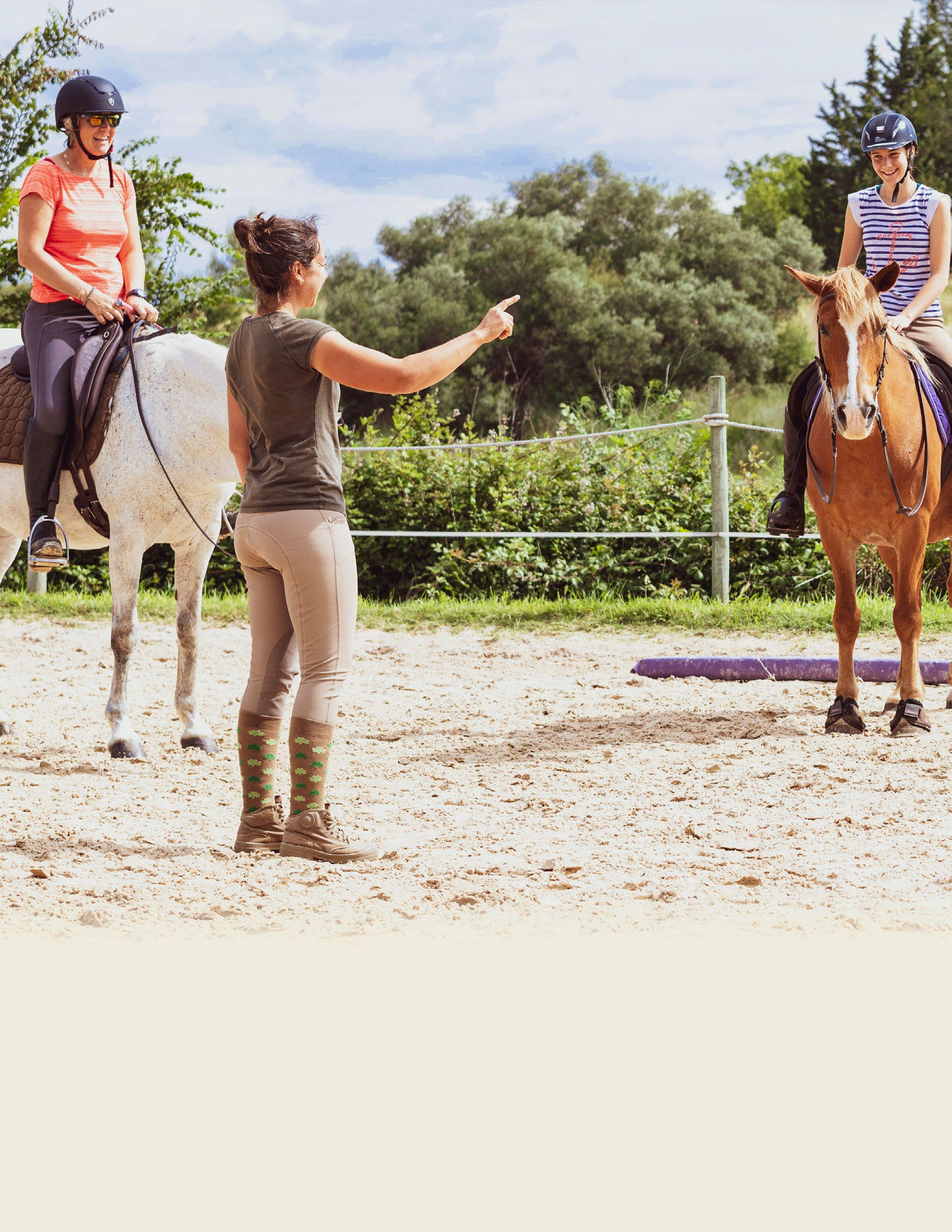On The Trail Again Down Under
by Janet Forster
From Hoarse to Healthy: Voice Care for Instructors
by Didi Arias
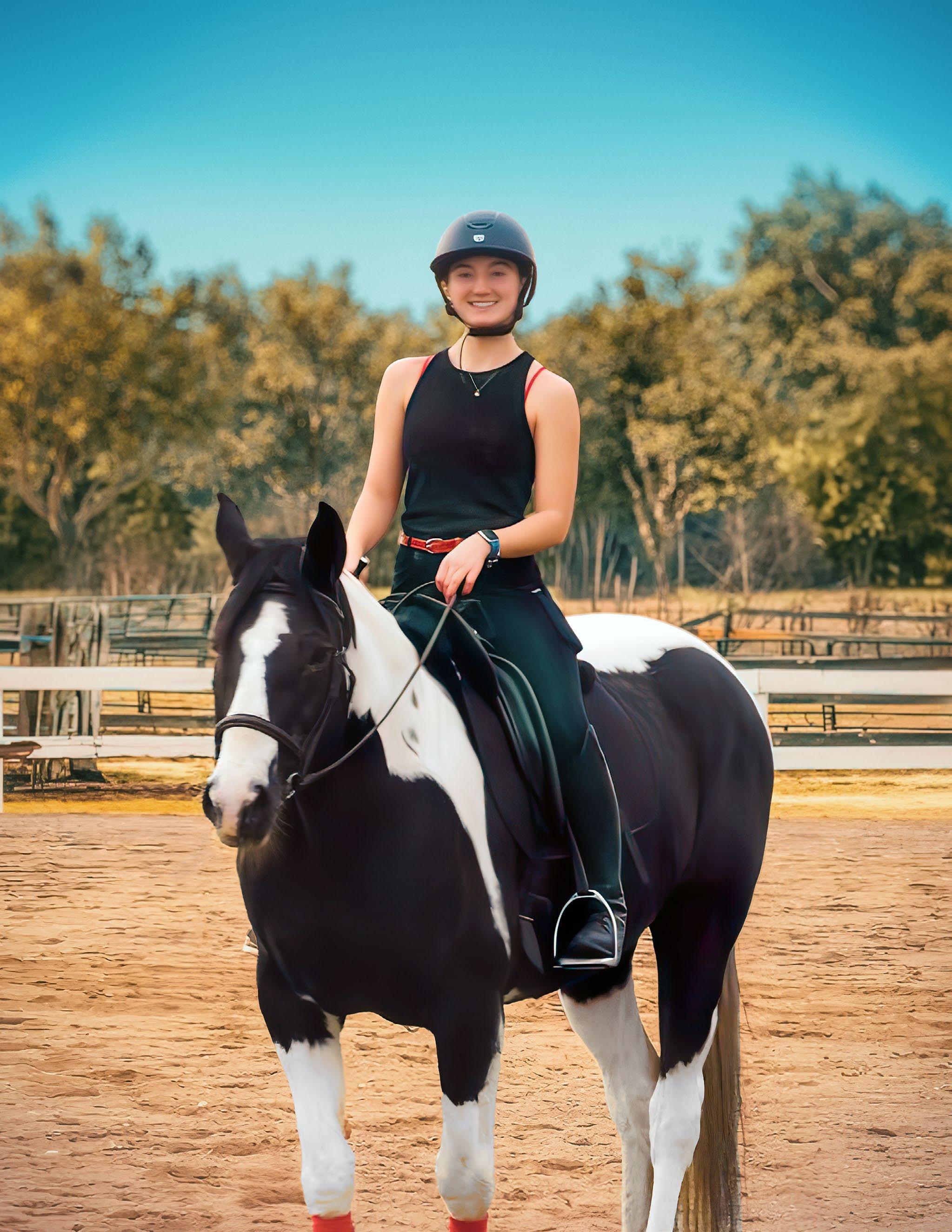
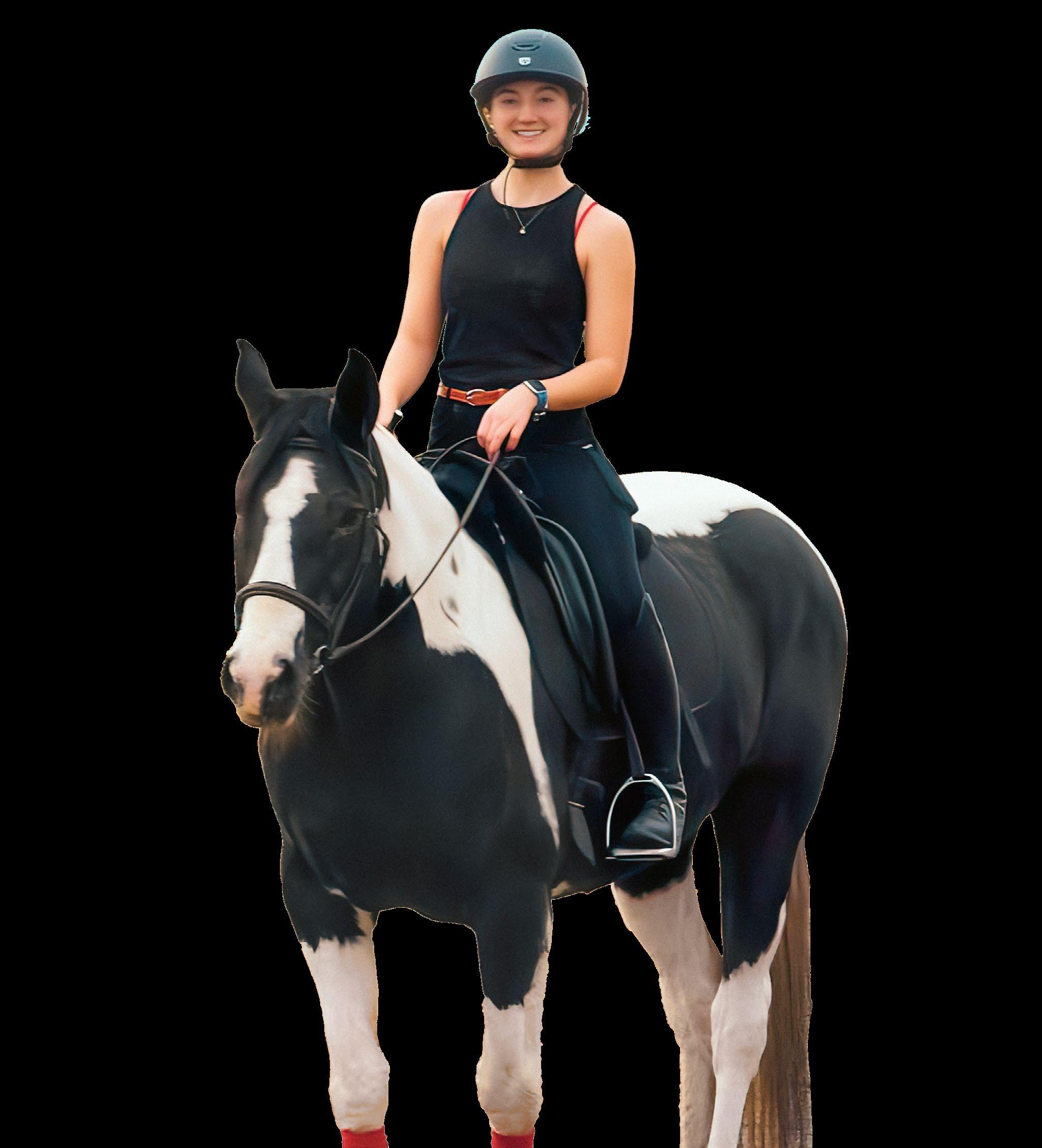
www.riding-instructor.com Official Publication



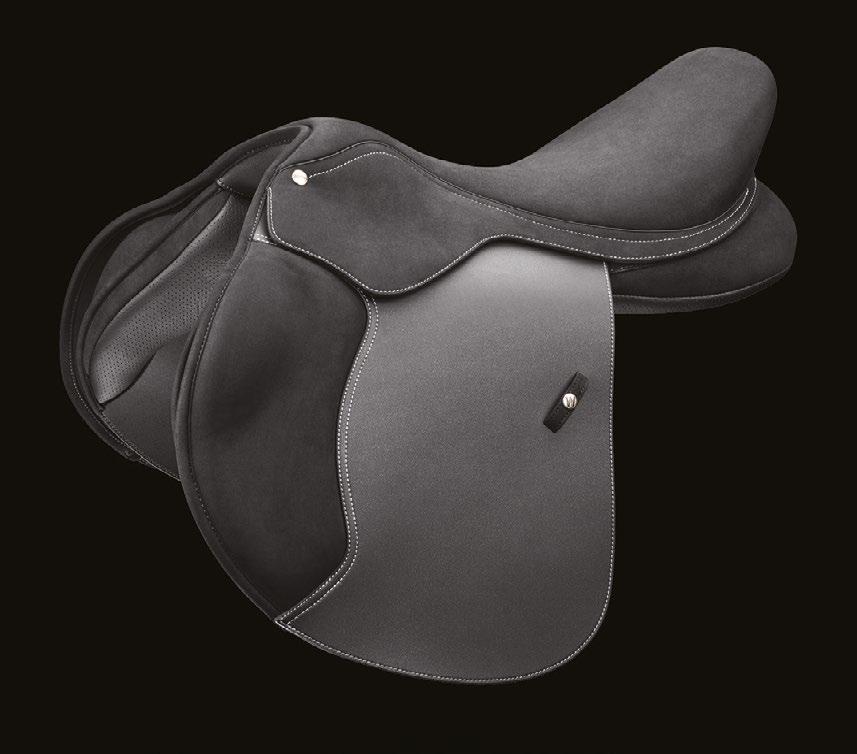
My leg finds a natural groove in my super-soft and grippy Wintec Pro Close Contact, making communication effortless! I feel balanced and in-control over jumps so we can confidently tackle any course. @wintecsaddles Share your story Find your next Wintec saddle at wintec-saddles.com @wintec.saddles
Wintec Pro Jump
Summer 2024
Published by:
American Riding Instructors Association
P.O. Box 366 Alton, NH 03809-0366
Tel: 603-605-5275
E-mail: aria@riding-instructor.com
Website: www.riding-instructor.com
Director: William Watson aria@riding-instructor.com
Manager of Corporate
Sponsorship and Advertising: Donna Hartshorn Tel 407-927-3578
Art Director: Ferenc Rozumberski franzz@gmail.com

Member
ARIA recognizes that equestrian headgear that does not meet the current ASTM standard is not safe, although certain equestrian activities pictured in this magazine may not adhere to these requirements.
Riding Instructor is the Official Publication of the American Riding Instructors Association.
For Advertising Rates & Data, please contact the publisher.
The editor of Riding Instructor reserves the right to edit reasonably all copy submitted, and all contributions become the property of Riding Instructor. The Editor does not hold himself responsible for, nor does he necessarily agree with, the opinions expressed in Riding Instructor Riding Instructor assumes no responsibility for loss or damage to unsolicited photographs or manuscripts.
Reproductions without permission are strictly prohibited by copyright laws. While endeavoring to accept only reliable advertising, Riding Instructor will not be responsible to the public for advertisements, and the right to decline or discontinue any advertisement is reserved.
ARICP Advisory Board
Debi DeTurk Peloso
Denny Emerson
Julie I. Fershtman, Esq.
Charlotte Brailey Kneeland * Founder
Gayle Lampe
Sarah Sliva, MD
Linda Tellington-Jones
ARIA Official Suppliers and Sponsors
These companies, whose commitment to quality reflects our own, are official suppliers and sponsors of the American Riding Instructors Association. We thank them for their support, which helps us to continue our work.

eartec.com Official Communications Device Supplier

www.horseinsurance.com ARIA’s Official Insurance Supplier

www.williamwoods.edu/eqs ARIA Official Sponsor
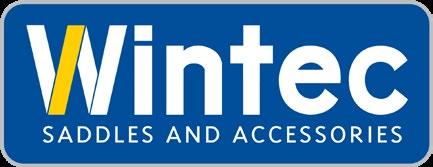
www.wintec-saddles.com ARIA’s Official Saddle Supplier
Summer 2024 | Riding Instructor 3
To learn the benefits of becoming an ARIA Official Supplier
Sponsor, please contact ARIA at 603-605-5275
aria@riding-instructor.com
or
or
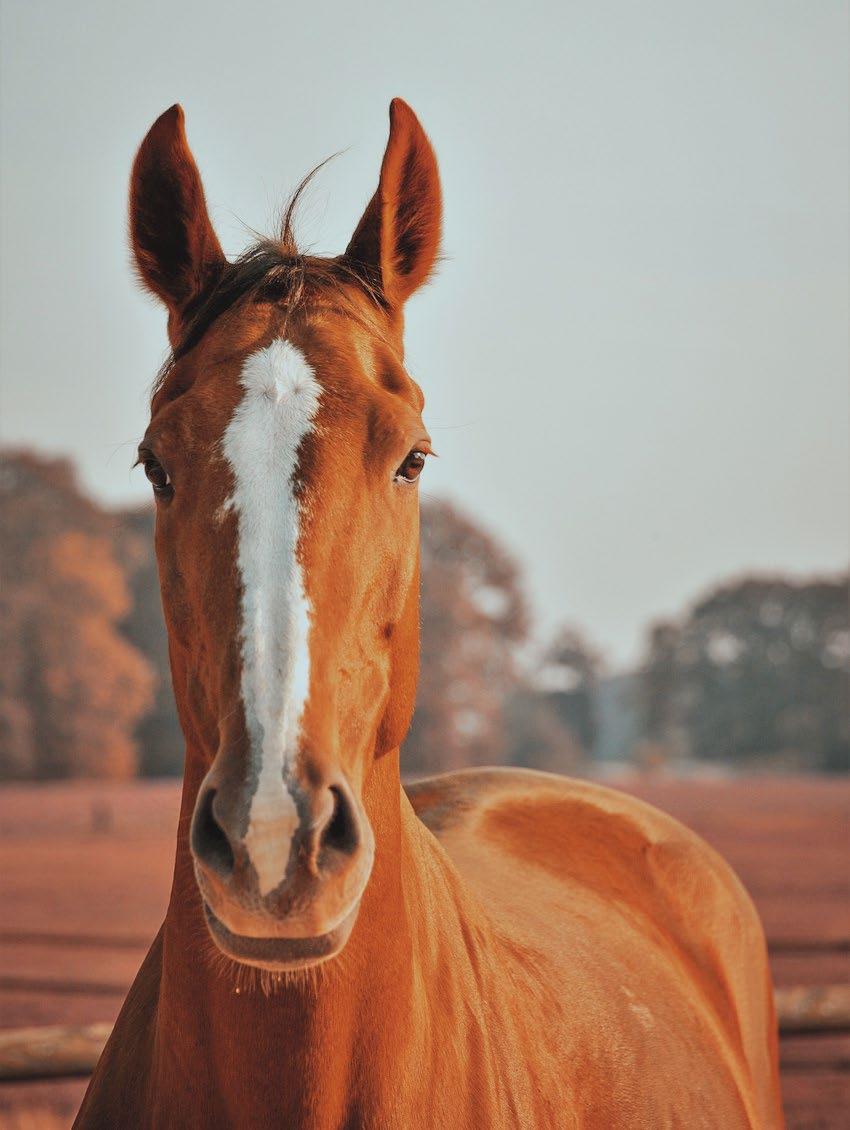
5 Don’t Do Nothing By Lydia Fairchok 7 From Hoarse to Healthy: Voice Care for Instructors By Didi Arias 9 Legal focus Seven Suggestions for Avoiding Equine Sale Disputes Julie I. Fershtman, Attorney at Law 11 Beware of the Green: Identifying Toxic Plants in Your Horse’s Grazing Grounds Written By Shya Beth 13 Sport psychology Help Your Students Develop a Winning Mindset Laura King CHt, NLP, Life & Performance Coach 16 Business matters Determining Whether Your Equine Operation is a Hobby or a Business By Karen Cole 19 On The Trail Again Down Under By Janet Forster 23 Sponsor Spotlight 24 Cameo’s Cauldron MAKE TIME FOR YOURSELF By Cameo Miller
Don’t Do Nothing
By Lydia Fairchok

“Make a decision. It might not be the right decision; it might not even be close to the best decision, but doing nothing will always be the wrong decision.”
I’m not entirely certain from whom I first heard those words. It’s a tenant often repeated in the various 911 dispatch and law enforcement trainings that I attend, and it’s something that echoes at the back of my mind in the arena, on the job, and in personal life. Make a decision
We have choices in front of us every minute of every day. Most of them are so simple we don’t even realize we are making a decision.
Some make us stop and consider for a few moments, and some unfold so rapidly that we barely have time to react, let alone think. No matter what we do in response to the situations and pressures around us, though, we are still always choosing a response that leads to an outcome, for better or worse.
It’s impossible for us to make the right decision in every situation. Preparation and practice make the likelihood of choosing the right response higher, but no matter what line of work you are in, there will always be a scenario for which you could not account. Many times, there is more than one “right” decision. It’s okay if you don’t make the best
possible choice, because often the ideal option isn’t even discernible until after the situation has been resolved. But whatever you do, don’t do nothing.
‘Doing nothing’ is not the same as choosing to be passive. In any number of circumstances, especially with horses, remaining solid, calm, and nonreactive is the optimal response. The kind of inaction this refers to is a deer-in-the-headlights failure to make any decision at all. In other words: choose activity or choose passivity, but don’t freeze.
Decision-making paralysis typically stems from fear. What if I fail? What if get hurt?
Summer 2024 | Riding Instructor 5
First Published in RI magazine Summer 2017
What will they think? Fear locks up the wheels of our brain and leaves us at the mercy of our circumstances. In this case, consequences become something that happen to you, instead of because of you. Fear makes us lose control of ourselves and our surroundings.
Lack of training is another area that leads to circumstantial immobility. What do I do? How do I do that? When I was first learning the ins and outs of 911 call taking and dispatching, I encountered the axiom “When in doubt, trust your training. Also, don’t be in doubt so much.” It took a minute of pondering to realize that this was an indirect way of saying train more. And it was true: The greater my knowledge of resources, equipment, best practices, and agency policies, the less I hesitated to make decisions because the choices became intuitive. It’s the same with riding, instructing, and any other task at hand: when you know your tools and know the rules, you have everything you need to make a choice.
When it comes to your students, you are the one charged with teaching them about their tools and rules. You may not be able to prepare them for every possibility that will come their way, but you can educate them about the effects their bodies, tack, and aids have on the horse. You can cultivate an empathetic understanding of the instincts that govern the horse’s reactions, and build practical knowledge of the physical dynamics that occur between horse and rider. Above all, you can instill confidence, awareness, proactivity, and a problemsolving mindset so they will always seek to overcome instead of shutting down.
Imparting these things to your riders means you must first lead by example. Just as the rider communicates security to the horse, so the instructor empowers the student. Take a hard look at yourself and ask if you are making choices that make you a better role model and leader for the riders who have placed their trust in you.
Are you committed to an ever-expanding knowledge of your subject matter? Do you project the kind of boldness and creativity that you want your students to carry with them even when you aren’t there?
Making a decision isn’t about ultimately being right or wrong; it’s about recognizing an obstacle and committing to a course of action. Training and preparation lead to making better decisions, but not always the very best ones, and sometimes despite all the planning in the world things still go terribly awry. Life in general and horses in particular are too full of wild cards and curve balls to ever lack for challenges and mistakes. It’s just part of the risk—but it’s also part of the appeal, isn’t it? The things we love are rewarding not because they are easy, but because they are meaningful. Don’t let indecision hold you or your students back. Train hard, commit, take risks—and whatever you do, don’t do nothing
Markel® has you covered
Purchase liability insurance online today!
An accident that happens during your lesson is a threat to your career, business and assets. We know you are busy! It only takes a few minutes to protect you and your business by applying online for a Markel equine liability insurance quote.
• ARIA members receive a 10% association member credit applied towards liability policy premium.
• Coverage applies wherever you teach (on and off premises).
• Liability limits available up to $1,000,000.
• Excess liability limits available up to $5,000,000.
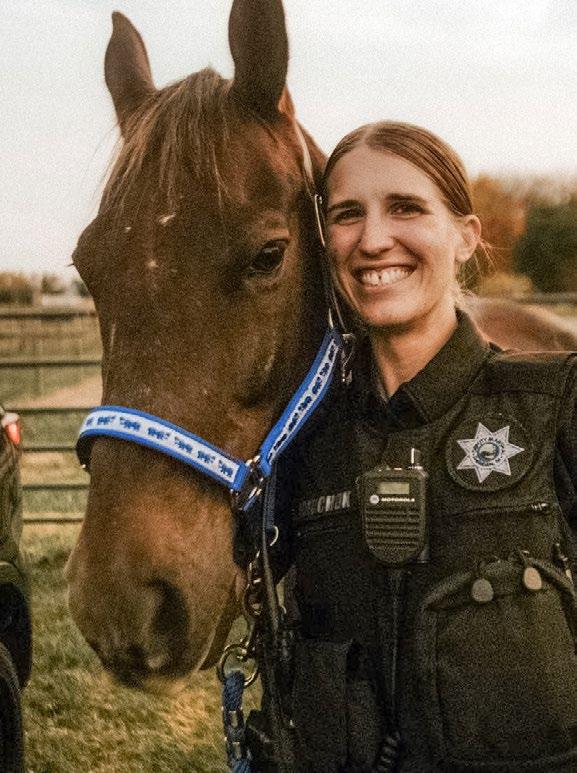
About the author:
Lydia Fairchok is certified in Recreational Riding Level 1, and lives and teaches with her three horses in Central Indiana. Lydia segued from a full time instruction career to the field of public safety in 2014 and continues to teach a small number of students while working as a police officer and 9-1-1 dispatcher.
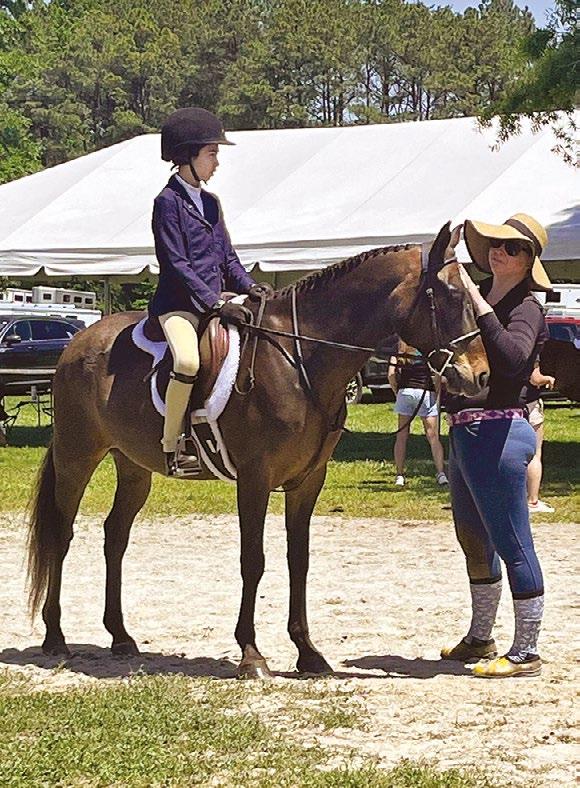
Madeline & Freddy, Instructed by Liz Briggs
Summer 2024 | Riding Instructor 6
Products and services are provided by one or more of the insurance companies under the Markel North America Insurance Group and policyholder services are provided by the underwriting manager Markel Service, Incorporated, national producer number 27585. Terms and conditions for rate and coverage may vary. Markel is a registered trademark of the Markel Corporation. ©2023 Markel Service, Incorporated. All rights reserved. Liability • Mortality • Farm owners • Care, custody & control • Excess liability horseinsurance@markel.com +1.800.446.7925 Markelhorseandfarm.com /MarkelHorse Official Insurance Supplier of The American Riding Instructors Association
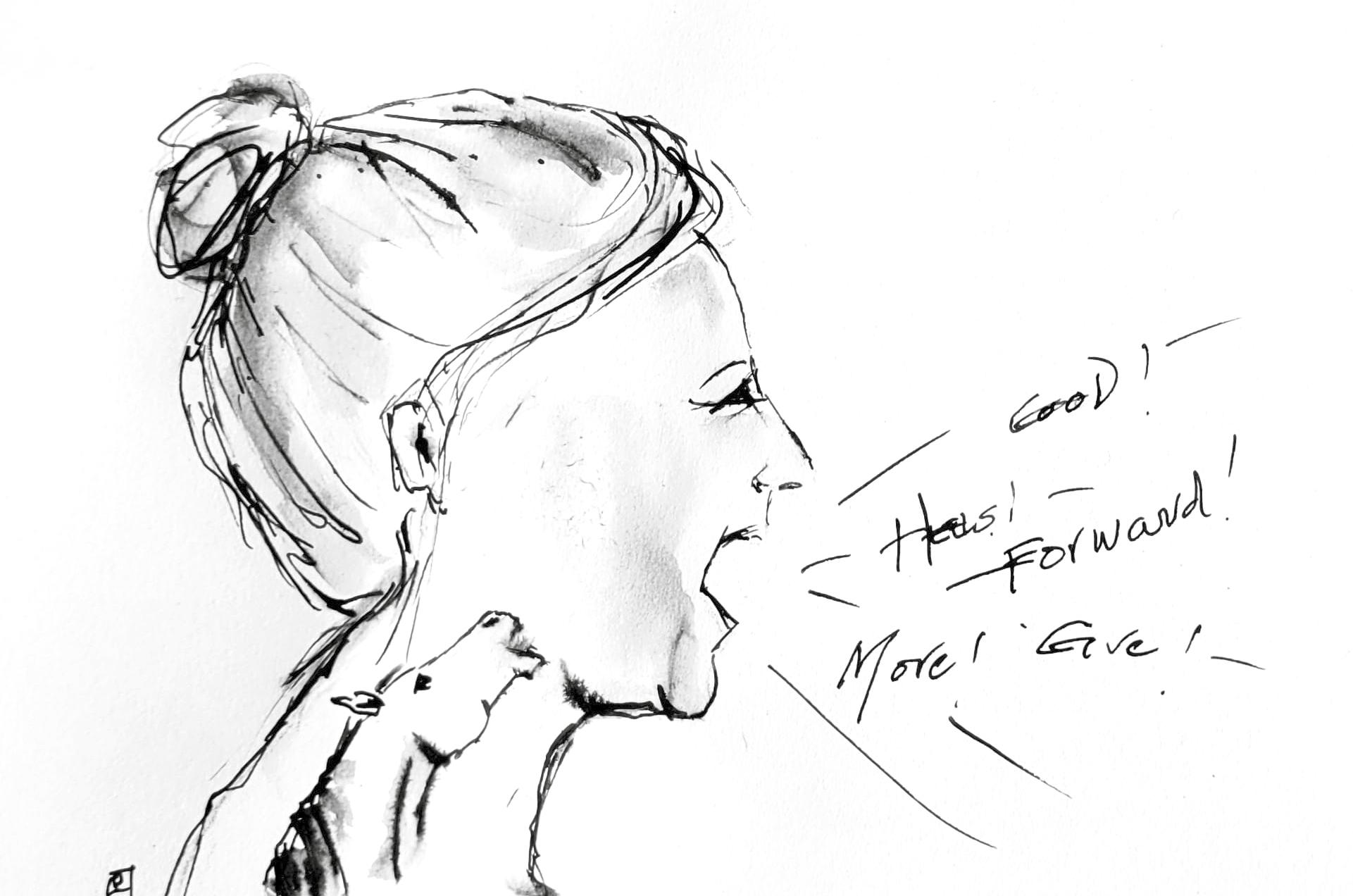
From Hoarse to Healthy: Voice Care for Instructors
By Didi Arias Illustration by author
That niggling hoarseness, a sore and lumpy feeling in the throat, the inability to control pitch as well as a cracking of the voice are signs of a strained vocal chords, common to teachers and especially riding instructors. When I had a heavy lesson schedule, I found I was increasingly struggling with all of the above symptoms, and it got so bad that after our summer horse camps I was left voiceless for a week or so afterwards. Not good.
With the voice being one of our main
instructor tools, the need to look after it is obvious, but we rarely afford to give ourselves that self-care attention, focusing mostly on students, horses, family and barn/farm stuff. But strained vocal chords are not just an uncomfortable nuisance; a build-up of irritation can lead to more serious issues such as polyps, ulcers and vocal nodules.
Though we can put on a helmet or body protector to help reduce injury to some body
parts, there isn´t such a piece of equipment to attach to our voice box every time we go to teach. However, there are some general guidelines that you can follow to help give your voice maker the TLC it deserves.
Find your “teaching voice”, that honeyed tone zone that is comprised of volume, pitch, and speed.
Close the distance between yourself and the person you are talking to: not everything we
Summer 2024 | Riding Instructor 7
say when we teach needs to be done from a distance.
Speak succinctly to get your instruction across.
Keep hydrated, drinking frequently, especially liquids of room to warm temperatures. Personally, the drier, hotter and dustier the environment, the more I drink.
It seems logical to avoid shouting, but likewise, avoid whispering as both are considered “extremes” and tighten up the throat muscles.
If you don´t use them already, consider voice amplification device: this was a game changer for me.
When possible, avoid speaking in noisy environments, including cars.
Avoid the urge to be constantly clearing your throat. That strong, forced breath used to clear phlegm kind of bangs the vocal chores together and is similar to coughing. Try sipping some liquid instead.
Consider employing alternate auditory sounds instead of shouting. Try using a whistle or bell. Hand signals can also be used to indicate general instructions as in pointing out direction or turn.
Talking less and listening more obviously gives your voice a break, so take control and rein in those Chatty Cathy urges to constantly be speaking.
Learning how to project the voice is not just for singers. Both voice therapy and Alexander Technique sessions can be very helpful in guiding how to use breath and voice production to send the voice out easily forward through the mouth. We are well aware that proper muscle relaxation and correct posture can positively affect riding (Sally Swift´s “ride our bones” is our mantra), so too can it influence one´s voice quality. When we´re
“
Learning how to project the voice is not just for singers. ”
teaching, imagine how helpful “speaking” from our bones could be, too.
Whether sitting or standing, the tension caused by the incorrect carriage of the head, shoulders, neck, plus tightening the jaw and tongue can influence speech, causing a strained and weak voice. Likewise, poor postural habits, such as slouching, inhibit the ribcage and diaphragm movement, which affects the breath. Practice frequent posture check-ins: think of allowing the head to balance as freely as possible on top of your reasonably erect body, and avoid tightening the neck awkwardly in to a forced position (like trying really hard to pull your chin in or your shoulders back).
One simple trick I learned from a voice therapist is that if you need to use your voice to call out while standing, feel both feet solidly on the ground and breath from deep down in the body, keeping the voice reasonably low; think of projecting it straight forward, without squeezing it out with the throat muscles. This brings back memories of the high school choir teacher telling you to “sing from your belly”.
Just as we concentrate on warmups for both horses and riders, there are also preparatory warmup exercises for the voice. A simple one I was taught is to think of the head balanced and centered on the neck with the top of the head directing upwards. Allow the breath in through the nose, then allow it to come out
the mouth in an audible but faint whisper while smiling, using no effort in the throat. Take a momentary break, doing nothing, then allow the next breath in through the nose again, repeating the exercise. Breathe consciously in this way for a while, and then revert back to breathing normally. This should give a feeling of relaxation and leave you prepped and ready for teaching.
If one´s voice is in recovery, avoid using the voice at all, allowing a good rest. Have writing instruments at hand, send phone messages or whatever to communicate. If speech is necessary, speak sparingly, using short sentences, in a conversational tone (like speaking to someone next to you) and avoiding any speech type that squeezes the throat muscles. Go ahead and enjoy hot steam inhalations/baths, concentrating on breathing through the nose as much as possible.
As an instructor who has had voice strain issues in the past, it was well worth seeking professional help and following the advice and exercises that not only keep me in better tune with my body, but showed me how to best care for something that I didn´t care to lose.

About the author:
Didi Arias is a Level 3 ARIA Certified Instructor and national dressage judge and teacher, who resides in Almeria, Spain.
Summer 2024 | Riding Instructor 8

Seven Suggestions for Avoiding Equine Sale Disputes
Julie I. Fershtman, Attorney at Law www.equinelaw.net
I’ve represented horse buyers and sellers on equine sales disputes for decades. Lawsuits have involved claims of breach of contract, fraud, violation of a state Uniform Commercial Code, or violation of a state Consumer Protection Act or Deceptive Trade Practice Act. Lawsuits can involve rescission of a sale, return of a horse, reimbursement of a party’s expenses, reimbursement of legal fees, and sometimes more. State laws differ.
Certainly, lawyers like me enjoy winning cases for our clients, but the fact is that lawsuits take their toll on the parties involved, emotionally and financially. Here are some suggestions for avoiding sales disputes.
What Not to Do in Horse Sales
1. Before you publish statements in advertisements make a reasonable effort to check for accuracy. Make sure you can
confidently stand by the statements you place in your ads. Years ago, I represented buyers in a lawsuit where a horse had been advertised as “sound,” with “no bad habits” and “ready to show.” Evidence uncovered in the case, however, proved those statements to be false and even raised serious questions about whether the sellers recklessly included them.
Summer 2024 | Riding Instructor 9
Legal focus
2. Don’t assume that the wording of your ads carries no legal weight. It absolutely can. Under the law of several states, advertisements could qualify as warranties for which sellers might be legally accountable if the horse fails to measure up to them.
3. Don’t assume that “as-is” language in your sales contract will immunize you from a legal dispute. Sellers often include “as-is” language in their contracts, but courts in several states have ruled that these clauses cannot prevent a sales fraud case against the seller.
4. Don’t assume that “buyer beware” is the law and buyers have no rights. Depending on the facts and law, horse buyers potentially have recourse against sellers. Some cases fail, some succeed.
5. Don’t assume that if you, the seller, lose a sales lawsuit, your liability will limited to a refund of the buyer’s purchase price. Some state laws could result in the seller being ordered to pay winning buyer’s attorney fees and costs. Also, some states have consumer protection/deceptive trade practice laws that, if applicable, might

“
Unless special coverage is purchased, your policy probably doesn't cover claims involving contract and sale disputes ”
fraud. For example, if a horse has a wellknown tendency to kick out forcefully at the walls of his stall, your concealment of this information from a prospective buyer who specifically asks about the horse’s stall manners could set you up for liability for fraudulent concealment.
Conclusion
Whether you are an unhappy buyer or a seller who was threatened with a lawsuit, seek knowledgeable legal advice. Well-worded sales contracts can sometimes prevent disputes or narrow the grounds of a dispute.
This article does not constitute legal advice. When questions arise based on specific situations, direct them to a knowledgeable attorney.
obligate a losing seller to pay the winning buyer “treble damages” (where the buyer’s awardable damages are actually tripled) in addition to the buyer’s legal fees. Regardless of whether the sellers win or loses a lawsuit, they will be expected to pay their legal defense costs. Consequently, even a winning defense can be costly. And rarely, in my experience, will the losing party be ordered to pay the winning party’s fees.
6. If someone brings an equine sale lawsuit against you, don’t assume that your liability insurance company will cover it Basic insurance policies, such as commercial liability policies, are designed to respond to claims involving “personal injury” or damage to tangible personal property. Unless special coverage is purchased, your policy probably doesn’t cover claims involving contract and sale disputes. If you have questions regarding your insurance coverage, check with your insurance agent and/or insurance company.
7. Don’t assume that your silence, especially in response to the buyer’s specific questions, will shield you from liability for

About the Author
Julie Fershtman is one of the nation’s best-known and most experienced Equine Law practitioners, with a law practice that is national in scope. A lawyer for over 37 years, she is a Shareholder with the law firm Foster Swift Collins & Smith, PC, in Michigan. She is listed in The Best Lawyers in America and Super Lawyers. Her speaking engagements span 29 states. The ABA published her latest awardwinning book, “Equine Law & Horse Sense,” which was written for non-lawyers and lawyers. Find it on Amazon and look for the horse on the cover. For more information, visit www.equinelaw.net
Summer 2024 | Riding Instructor 10
Legal focus
Julie I. Fershtman, Attorney at Law
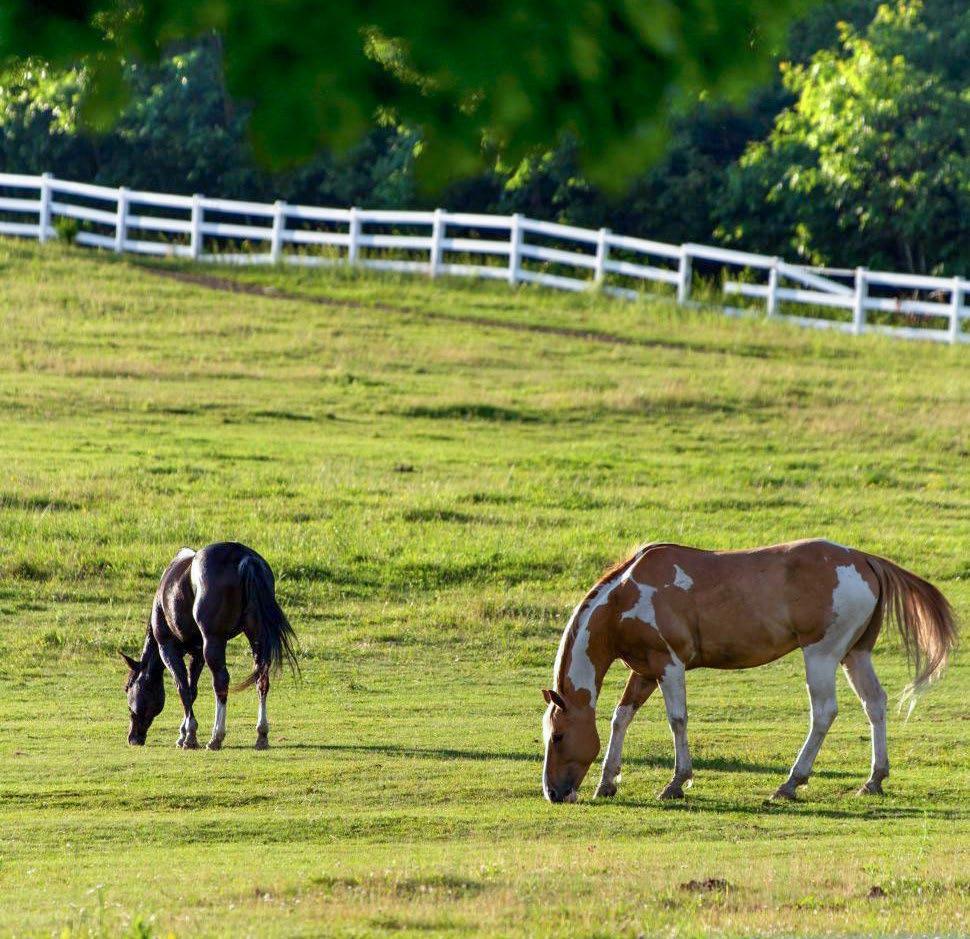
Beware of the Green Identifying Toxic Plants in Your Horse’s Grazing Grounds
Written By Shya Beth
As horse owners, we know there are dozens and dozens of plants that are poisonous to horses. It’s paramount to not only know what common plants are treacherous to our four legged friends, but to actively look for them growing in your horse’s paddocks and fields, especially if the conditions of
the land are dry or overgrazed. All it takes is a curious, bored, or hungry horse to take one too many nibbles, and the vet will need to be on his way to solve an issue that could have been avoided in the first place.
Let’s grab a hand shovel, old feed bag and
some (non-toxic, environmentally friendly) weed spray and head out to greener pastures on a toxic weed hunt!
No butter for you
While butter may not be the healthiest for humans, buttercups are deadly to horses.
Summer 2024 | Riding Instructor 11
While most horses are smart enough to completely ignore those droplets of sunshine, leave a horse alone for a period of time in an overgrazed or in a field in poor condition, those green leaves and shiny petals might start looking like a timely appetizer. The toxicity of the buttercups causes oral irritation when chewed, and symptoms of buttercup poisoning include an increase in salivation and a decrease in appetite, with possible colic and diarrhea. The toxic component is in the fresh leaves and flowers, but they lose toxicity when dried in hay.
You’d be a fool to grow this parsley
While parsley may be a delicious herb or garnish to many meals, Fool’s Parsley, also known as poison hemlock, is not something you want in your pastures, or in your horse’s hay. Poison hemlock gets it name from being poisonous to many animals, including horses, cattle and sheep. Horses can die within hours from ingesting two to five pounds per 1,000 pounds of body weight of this tall white flower. While that might sound like a lot of plants a horse would need to eat, it adds up quickly if the hay that the horse is eating is contaminated, or if the horse is hungry enough to start eating it during the summer months in a paddock that lacks enough quality grass.
No rags or warts in this hay, please Ragwort is one of those plants that, even in the worst of pastures, horses tend to save for their last meal due to its bitter taste. One accidental bite usually sends them spitting it right out and moving onto something else that meets their standards, but Ragwort becomes a tasteless enemy when dried in hay, as it looses its bitter warning taste, but it is still toxic to horse’s livers. To make matters worse, the effects of the toxins can build up over time, slowly poisoning the horse and causing irreparable damage. That’s why checking the sources of your horse’s hay and working with the supplier’s to ensure quality is so important to your horse’s health and wellbeing.
A poke a day keeps the doctor in the stable Poke, Pigeonberry, Cancer-root, American Cancer, Red-ink plant - these are all names for the same plant, the common Pokeweed that looks more like a prehistoric humongous flowering plant than its modern day uses as a spinach-like food for humans and ink and dye for crafts. Growing up to 20 feet tall, this interesting plant is poisonous to horses and humans (unless prepared correctly for human consumption). The roots are the most toxic, but the whole plant is poisonous to equines and can cause a burning sensation in the mouth as well as chronic colic and diarrhea.
Keep
horsetails away
from horses
Used by Romans and Greeks to help heal kidney and bladder conditions, encourage wound healing and to stop bleeding, Horsetails are not helpful for horses. And, no, not the actual tail of a horse - horses might have healing properties when it comes to uplifting our moods, but Horsetail, the fern, is quite poisonous for horses to ingest. Horsetail’s scientific name is Equisetum arvense, and the name “Equisetum” is derived from the Latin words equus, meaning “horse,” and seta, meaning “bristle”. Horsetail is toxic when fresh or dried in hay, but it’s quite rare for a horse to eat enough to become sick or to die.
Look out for creeping charlie
More commonly known as Poison Ivy, this plant is a lot like Horsetail - poisonous, but very uncommon for a horse to eat enough that it causes problems. Horses have been noted to try and successfully grab a mouthful when out on a ride or while waiting for their riders to stop chatting with neighbors, but they would need to be in a near-dry lot with very little options when it comes to food in order to eat enough of this plant to cause serious damage. The main symptoms are Diarrhea, muscle spasms, and paralysis.
Flowers of the night
Nightshade, as many horse people know, is one of the deadliest plants for horses to
ingest. The nightshade has a large family tree, connected to many plants like tomatoes and potatoes, eggplants, Petunias and Tamarillos, there are several versions of the wild trailing shrub with purple flowers often seen in fields, wooded areas, and along roadsides. The entire plant is toxic to horses if eaten. Often found in hay, the dried form is still as toxic, which increases the chances of horses consuming it. Eastern black nightshade is one of the common versions of the plant found in fields, and only 0.3 to 0.7 percent of a horse’s bodyweight in the plant’s berries can be toxic and may cause death.
Understanding the dangers posed by seemingly innocent plants is the first step to maintaining a healthy horse habitat. While many toxic plants will not be an issue for horses who have high quality pastures and hay, actively looking for toxic flora eliminates the possibility of endangering the horse’s well-being, allowing them to frolic and thrive without the threat of botanical harm.
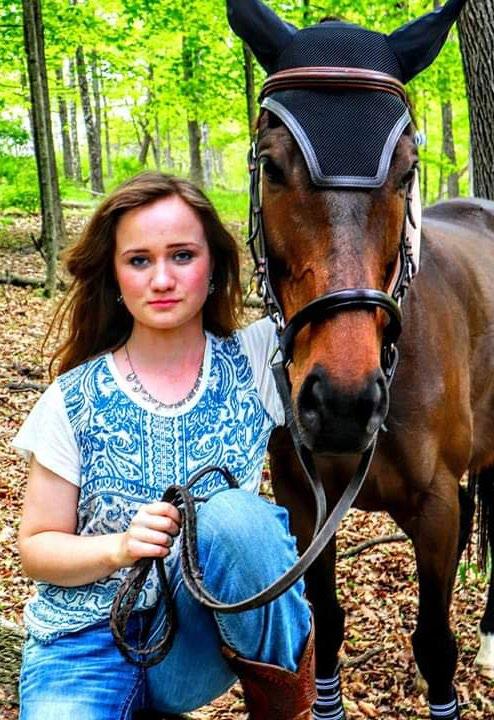
Summer 2024 | Riding Instructor 12
About the author:
Shya Beth is a rider, artist writer and all around horse lover based in New Jersey, USA. Whether creating horses in art, riding in the fields on her farm or writing about horses, horses are a huge aspect of her life and inspire her every day.

Help Your Students Develop a Winning Mindset
Laura King CHt, NLP, Life & Performance Coach
Your profession allows you the incredible opportunity to not only teach technical riding skills, but to also empower your students with a transformative mindset. By incorporating mindset training into your lessons, you can give your students the mental edge they need to achieve their equestrian dreams. When your students learn to approach challenges with enthusiasm, focus, and self-belief, they’ll be unstoppable in the saddle.
There are two main types of mindsets: a limiting mindset and a growth mindset. A limiting mindset is stocked with beliefs that hold you back from growing. They don’t
serve you in any way; there’s a ceiling on the amount of growth you can experience. On the flip side, there’s the growth mindset. People with a growth mindset have beliefs that expand their full potential, and they know there is no limit to what can be achieved.
“Whether you believe you can or whether you believe you can’t, you’re right.”
~ Henry Ford
Get your students fired up about developing a winning mindset with goal-setting, maintaining a positive mindset, visualization, selftalk, challenging limiting beliefs, developing
mental toughness and living a balanced lifestyle. Teach them how to manage nerves, bounce back from setbacks, use self-talk to their advantage, develop mental toughness and focus on performing at their personal best. By prioritizing mindset development alongside physical training, equestrian athletes can optimize their abilities to perform under pressure, make quick decisions, and create a harmonious partnership with their equine counterparts. With your guidance, they’ll develop a champion’s mindset that will serve them well both in the saddle and in life—and the rewards will spill over into your personal and professional life as well.
Summer 2024 | Riding Instructor 13
Sport psychology
How Mindset Training Benefits
Equestrian Athletes
• Enhanced Focus and Concentration: In the fast-paced world of equestrian sports, maintaining focus is crucial.
• Increased Confidence: Confidence is key in any sport; this confidence translates into improved performance and a stronger connection with our horses.
• Effective Goal Setting: Setting clear, achievable goals is fundamental to success in equestrian sports. By breaking down long-term aspirations into manageable steps, riders can track progress and stay motivated on their journey.
• Resilience and Mental Toughness: Equestrian sports are filled with challenges, from unexpected falls to disappointing results. Mindset training equips riders with the tools to bounce back from setbacks and maintain a positive mindset throughout their equestrian journey.
• Improved Visualization Skills: Visualization is a powerful tool used by many elite athletes. Equestrians learn to visualize themselves successfully navigating a course, flawlessly executing a dressage test, or conquering a challenging jump.
What is Mindset Training?
The core premise of mindset training is that our thoughts and beliefs directly influence our emotions, behaviors, and ultimately, our results. Techniques such as visualization, goal-setting, and positive self-talk can help riders approach competition and training with a centered, empowered focus.
Tips for Helping Your Students Use Mindset Training
Now that you understand the importance and benefits of mindset training, let’s explore some practical tips for incorporating it into your students’ athletic routine to achieve success:

• Set Clear and Realistic Goals: Goalsetting is a fundamental aspect of mindset training. Students should set specific, measurable and achievable goals for athletic performance, and regularly review and adjust them as needed. In my book, “The Power to Win,” I explain how to design a peak performance plan by formulating a schedule they will enjoy executing on a daily and weekly basis.
While winning competitions is undoubtedly exciting, focusing solely on outcomes can lead to undue pressure, Instead, set process-oriented goals that focus on aspects of riding that can be controlled, such as improving position, mastering a particular skill, or enhancing communication with the horse.
• Cultivate a Positive Mindset: Many athletes indulge in self-criticism and negative self-judgement. Remember that mistakes don’t reflect on you as a person or an athlete – the way you respond to them does. Not only should you remind your students that mistakes are essential to progress, be sure to model that behavior yourself and provide real-life examples of a positive mindset.
• Visualize Success: Help students understand how to take time to visualize themselves performing at their best while flawlessly executing skills and working seamlessly with their horses. Visualization can help build confidence and prepare the mind for competition. I like to have my cli-
ents visualize themselves riding their horses successfully to each fence, executing a flying change, or nailing a perfect sliding stop in a balanced and relaxed manner.
• Help them become aware of the internal dialogue running through their mind. Replace negative thoughts with encouraging, empowering statements that build you up rather than tear you down.
Positive self-talk is a powerful tool for improving mindset and achieving goals, and by consciously replacing negative thoughts with encouraging, uplifting statements, a mindset of confidence, resilience and determination can be cultivated to help achieve peak performance.
This mental training can be just as important as physical preparation, as it allows you to approach obstacles and setbacks with a constructive, problem-solving attitude. Incorporating positive self-talk into a daily routine, whether through affirmations, visualization, or simply reframing your inner dialogue, can have a profound impact on overall well-being and the ability to perform at one’s best.
• Challenge Limiting Beliefs: We all have inner critics that can undermine our confidence and performance. Help your students identify any negative or limiting beliefs they hold about themselves as riders and challenge them with evidence to the contrary.
Summer 2024 | Riding Instructor 14
Sport psychology
• Develop Mental Toughness: Mental toughness is a crucial component of mindset training. Embrace challenges, learn from failures, and develop resilience in the face of adversity.
• Focus on the process, not just the outcome: Mindset training encourages athletes to focus on the steps toward improvement rather than solely fixating on the end result to develop a more resilient and adaptable mindset.
• Develop Pre-Ride and Pre-Competition Routines: Establishing a consistent pre-ride routine can help set the tone for a successful training session or competition. Including elements such as deep breathing exercises, visualization, and positive self-talk can help you and your students center mentally and emotionally before getting in the saddle. Include relaxation techniques, and specific warm-up routines tailored to individual preferences.
• Work with a Certified Hypnotist or Mental Coach: Seeking guidance from a certified hypnotist, mental coach or sports psychologist can provide athletes with personalized strategies and support to enhance their mental skills. These professionals can offer valuable insights, techniques, and tools to optimize mental performance.
For athletes and others seeking to optimize their mindset, hypnosis can be a powerful tool. Research has shown that hypnosis can help improve your mental mindset, confidence, focus and resilience – all critical components of peak performance. Many top competitors incorporate hypnosis into their regular mindset training routines.
During hypnosis, the conscious, analytical mind takes a backseat, allowing the subconscious to be more receptive to suggestion. A skilled hypnotherapist can then guide the individual to visualize success, affirm their abilities, and cultivate the mental state needed for peak performance. Contact me if you are
interested in hypnosis to help you and your students achieve a winning mindset.
• Reflect and Learn: Regularly reflecting on performance, identifying areas for improvement, and learning from experiences is a critical aspect of mindset training. After each training session or competition, take time to reflect on what went well and areas for improvement. Use these reflections to adjust your mindset and training approach accordingly. Every experience, whether positive or negative, is an opportunity to learn. By embracing a growth mindset, athletes can refine their mental approach and enhance their performance.
• Maintain Balance: Make time for priorities and activities outside of equestrian training to balance life and prevent burnout. In my book, “Figuring It Out, Balancing Your Wheel of Life,” I help guide you through the steps to figure out your personal plan to balance what I call the “Wheel of Life.” It depicts the eight parts of our lives that need tending in order to live a balanced life; Family, Fun and Happiness, Health, Purpose/ Meaning, Lifelong Learning, Relationships, Finances, and Position in Life/Career. With consistent practice, you can develop healthy habits of mind and body.
• Nourish your mind and body through proper rest, nutrition, and stress management. And don’t forget to get enough protein in your diet to fuel your body and your mind.
• Manage Stress and Anxiety: Stress and anxiety can significantly impact athletic performance. Mindfulness techniques, deep breathing exercises, meditation, muscle relaxation and other strategies can help athletes manage stress and maintain composure during high-pressure situations.
In conclusion, mindset training is a gamechanger for equestrian athletes looking to unlock their full potential. By developing and practicing mental skills, riders can elevate their performance, deepen their bond
with their horses, and achieve their equestrian goals. Incorporate my practical tips into your training regimen and watch as your students’ mindset transforms their riding experience for the better.
Remember: life is messy, and learning is messy and there is so much you can’t control. That makes what you can control – your mindset, your self-talk, your decision-making, your planning, the people you surround yourself with, and your daily habits – crucial to your well-being, happiness and success.
Need help addressing your challenges or achieving your goals? Sessions available in-person, via Zoom, or by phone..
Products: www.summitpress.net
Sessions: www.summithypnosis.com
Email: SummitHypnosis@gmail.com
Phone: 561-841-7603

About the author:
Laura King is the Director and Founder of Summit Hypnosis and Wellness and is a Certified Hypnotist, NLP Practitioner, Life Coach, and Sports Performance Coach. Laura has written and published several books and workbooks, including ”Power To Win” for equestrians and “Perfect Enough,” a guide to help you evaluate your perceptions and experiences around vital areas of your life.
Summer 2024 | Riding Instructor 15
Sport psychology

Determining Whether Your Equine Operation is a Hobby or a Business
By Karen Cole
Many equine enthusiasts are often unsure whether their small-scale horse operations qualify as legitimate businesses or remain classified as hobbies. Understanding the distinction between the two is crucial, particularly when it comes to
tax implications and financial planning.
According to the Internal Revenue Service (IRS), the primary factor that differentiates a business from a hobby is the intent to make a profit. Even if you operate on a small scale or lack extensive experience,
you can still be considered a business if your main objective is profitability. This article provides essential guidelines for distinguishing your equine activities as a business rather than a hobby.
Business matters
Understanding IRS Criteria for Business vs. Hobby
The IRS sets specific criteria to determine whether an activity is a business or a hobby. The most significant criterion is the profit motive. If your equine operation is primarily aimed at making a profit, it can be classified as a business, allowing you to deduct expenses that exceed your income. Conversely, hobbyists can only deduct expenses up to the amount of income generated by the hobby. This distinction is vital for tax purposes and long-term financial planning.
Key Indicators of a Business
To be recognized as a business by the IRS, you need to demonstrate several key factors that indicate a genuine profit motive. Here are some essential considerations:
1. Develop a Comprehensive Business Plan: Having a detailed business plan is a strong indicator of your intention to operate as a business. This plan should outline your financial goals, marketing strategies, and operational procedures. Regularly update and follow this plan to demonstrate your commitment to profitability.
2. Maintain Accurate Records: Keep meticulous records of all financial transactions, time invested, and equine activities. Accurate documentation supports your claim of running a business and is essential during IRS evaluations.
3. Invest Significant Time and Effort: The time and effort you dedicate to your equine operation should reflect your commitment to making it a profitable venture. The more involved you are, the stronger your case for being considered a business.
4. Income Sources: Ideally, a substantial portion of your income should come from your equine activities. Relying heavily on other income sources may weaken your case as a business entity.
5. Profitability Over Time: The IRS typically expects a business to show a profit in at least two out of every seven years. While occasional losses are acceptable, consistent profitability is a strong indicator of a business.
6. Continuous Improvement: Actively work on improving your business through cost-cutting measures, updating your business plan, and enhancing your management skills. Show that you are making efforts to increase profitability and efficiency.
Practical Tips for Running an Equine Business
1. Develop Industry Knowledge: As a business owner, having a deep understanding of the equine industry is crucial. Stay updated with industry trends, attend workshops, and network with other professionals to improve your expertise and business acumen.
2. Financial Management: Manage your finances prudently. Invest in tools and resources that can help streamline your operations and reduce costs. Consider hiring an accountant or financial advisor who specializes in equine businesses.
3. Marketing and Promotion: Effective marketing is essential for attracting clients and increasing revenue. Utilize both traditional and digital marketing strategies to reach potential customers. Maintain an active online presence through a professional website and social media channels.
4. Client Relationships: Build strong relationships with your clients by offering excellent service and maintaining open communication. Satisfied clients are more likely to return and refer others to your business.
5. Regulatory Compliance: Ensure that your business complies with all local, state, and federal regulations. This includes obtaining necessary licenses, adhering to zon-
ing laws, and following industry standards for horse care and facilities.
6. Insurance Coverage: Protect your business with appropriate insurance coverage. This includes liability insurance, property insurance, and coverage for your horses and equipment. Proper insurance can safeguard your business against unforeseen events and liabilities.
Hobby or Business?
Evaluating Your Situation
Determining whether your equine operation is a hobby or a business involves a thorough evaluation of your activities and financial practices. Consider the following questions:
Do you have a business plan, and do you follow it?
Are your records accurate and up-to-date?
How much time and effort do you invest in your equine activities?
What percentage of your income comes from your equine operation?
Have you shown a profit in at least two out of the last seven years?
Are you actively working to improve your business?
Answering these questions honestly can help you assess whether you are operating a business or a hobby. If you find that your equine activities lean more towards a hobby, consider what changes you can make to shift towards a business model.
Understanding the distinction between an equine hobby and a business is crucial for anyone involved in the horse industry. By demonstrating a clear profit motive, maintaining accurate records, and contin-
Summer 2024 | Riding Instructor 17
Business matters
uously improving your operations, you can position your equine activities as a legitimate business in the eyes of the IRS. This not only provides tax benefits but also sets the foundation for long-term success and sustainability.
Whether you are a seasoned professional or just starting, taking a business-oriented approach to your equine activities can significantly enhance your financial stability and growth potential. By following the guidelines and tips outlined in this article, you can confidently navigate the path from hobbyist to successful equine business owner.
Remember, the key to being recognized as a business is to consistently show that you are operating with the intent to make a profit. With dedication, strategic planning, and a commitment to continuous improvement, your equine operation can thrive as a legitimate and profitable business.
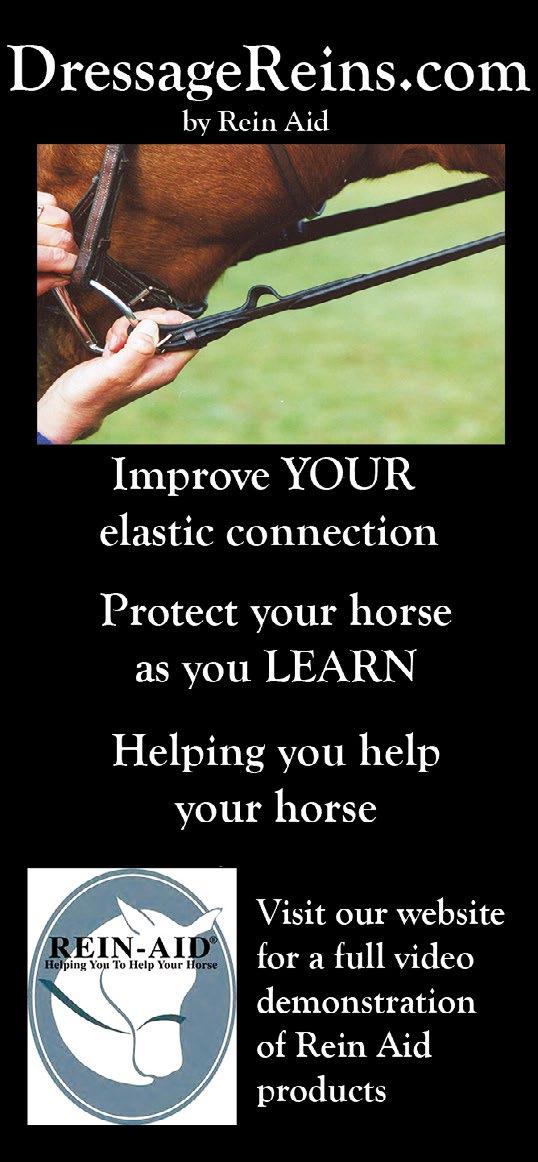


Summer 2024 | Riding Instructor 18
Business matters
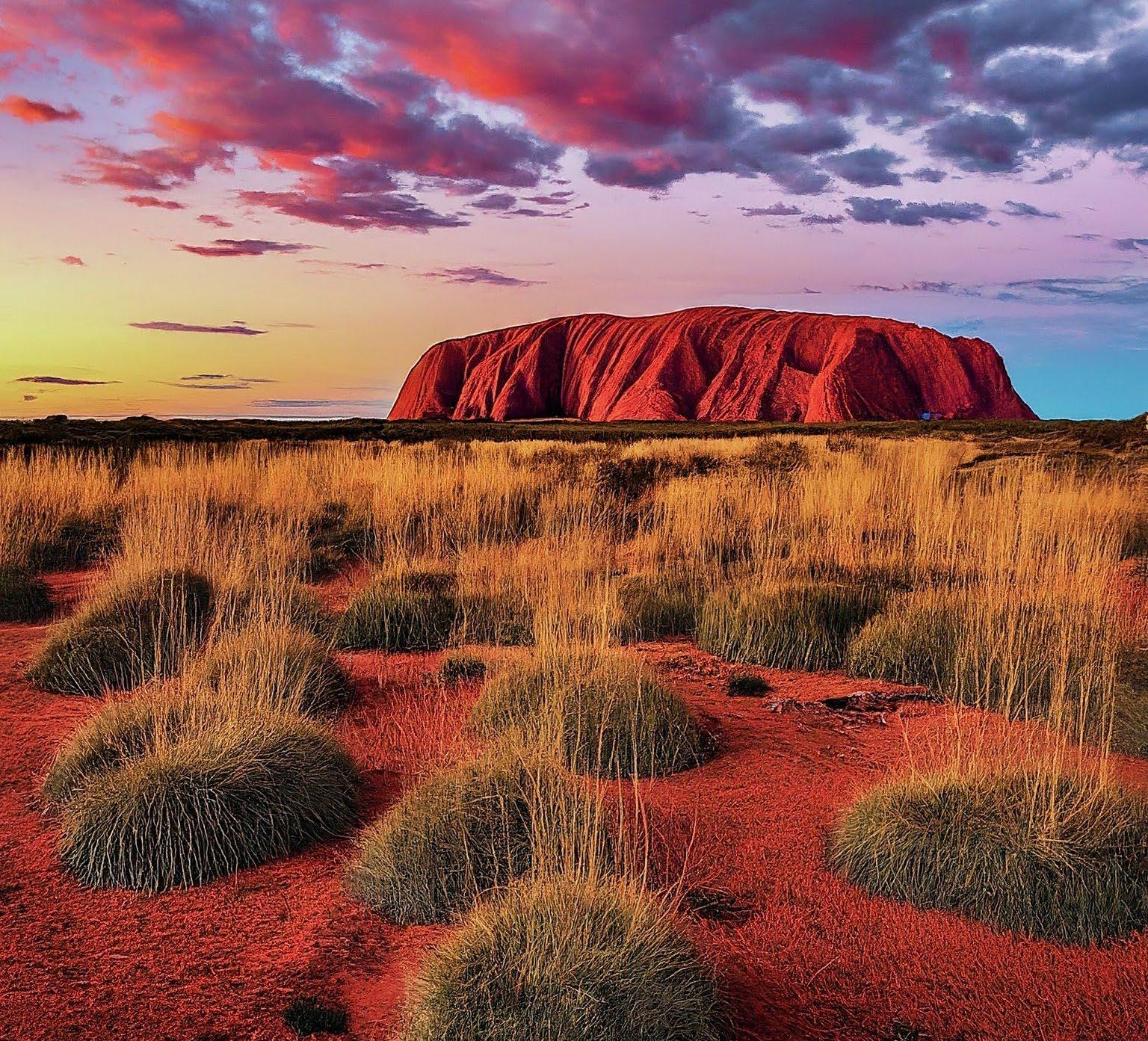
On The Trail Again Down Under
By Janet Forster
From iconic snowy mountain terrain pushed up before dinosaurs walked the earth – geologically Australia is the oldest continent on earth – to fascinating landscapes carved out by ancient glaciers, and vast red deserts across her centre… Australia is a horse trekkers dream.
So saddle up and experience 3 diverse horse trails down under that demonstrate the very best this wide brown land has to offer.
Summer 2024 | Riding Instructor 19
Australian outback.
The Man from Snowy River Ride (New South Wales)
Imagine galloping across vast, green mountain pastures with snow-capped peaks in the distance, breathing in the crisp mountain air as you ride through dense eucalyptus forests.
This could be you on The Man from Snowy River Ride, a legendary horseback riding adventure in New South Wales, on Australia’s east coast. The trek follows the path of that famous ride, penned by poet AB (Banjo) Patterson, and immortalised on the silver screen in the Australian film classic “The Man from Snowy River.”
This region of Australia is known for its dramatic mountain ranges, deep valleys, cascading rivers, and picturesque mountain towns. On your ride, you can expect to journey through stunning alpine scenery, those eucalyptus forests, and high plains.
There will be snowy peaks in winter and dazzling wildflowers in spring as you follow in the footsteps of that ‘stripling’ on his ‘small and weedy beast’, who was ’something like a racehorse undersized, 3 parts thoroughbred at least, with a touch of Timor pony. And such as are by mountain horsemen prized.’ –The Man From Snowy River (AB Paterson)
Keep an eye out for grazing cattle and sheep, and with a bit of luck, you might even spot wild brumbies, free-roaming horses descended from domestic stock.
Fun Fact: Australia’s brumbies are the largest population of feral horses in the world.
Ride difficulty:
Due to the sometimes challenging terrain – you are after all covering similar country to that depicted in the film – this trek is for more experienced riders. There will be steep climbs, equally as steep descents, many uneven paths, and river crossings.
You should be comfortable controlling your horses at various gaits and speeds, and
“
Just getting to Tasmania is an adventure in itself! ”
be prepared for long days in the saddle. However, it will be well worth the trek Down Under to go on this trek down under!
Stanley Adventure Tasmania (Tasmania)
Just getting to Tasmania is an adventure in itself!
Australia’s island state is separated from mainland Australia by a piece of treacherous water known as Bass Straight. It never used to be under water…
Once upon a time, before melting ice caps and rising sea levels inundated the low-lying strip of land, Tassie was very much attached to Australia via a dry land bridge. The Bering Land Bridge between Alaska and Russia experienced a similar fate a few thousand years earlier.
Today the only way to get to Tasmania, and Australia come to that, is by boat or plane.
But – the tiny island state is home to some of the most magnificent remnant wilderness areas in the southern hemisphere. The Stanley Adventure Tasmania horseback adventure trek takes you right through the heart of some of it. Into the UNESCO World Heritage listed Cradle Mountain-Lake St Clair National Park in fact. 2 6 9 1 6 7 5 8 9 4 8 7 2 6 9 5 5 1 3 6 7 8 6 2 8 5 9 7
Summer 2024 | Riding Instructor 20
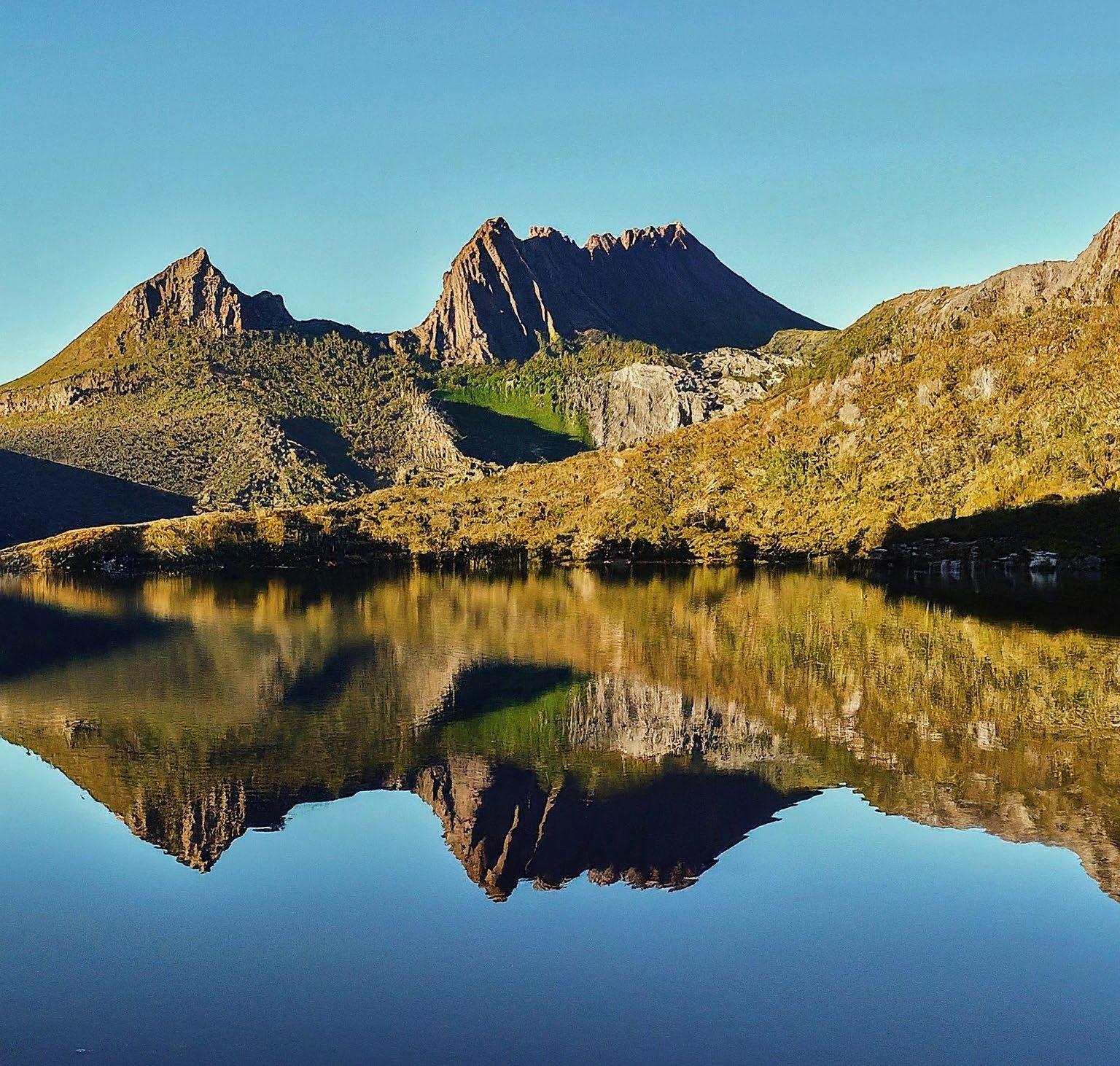
The park is renowned for its dramatic coastlines, ancient temperate rainforests, towering mountains, and glacial lakes. The lush but cool, dark, damp rainforests, where trunks of rare trees are shrouded in moss and lichens, juxtapose with open plains and panoramic views of Cradle Mountain.
You will traverse this diverse terrain on your trusty steed, winding your way through the
valleys with their prehistoric lakes, past icy cold cascading waterfalls. Enjoy a gallop along one of the beaches on the trek, and keep your eyes peeled for some unique Ozzie wildlife. It abounds here too – wombats, pademelons, Tasmanian devils, and bird life galore.
Fun Fact: the wombat is Australia’s unofficial Olympic mascot, made famous at the 2000 Sydney Games as the co-host of a particularly
satirical TV show that ran during the games.
Ride difficulty:
These rides cater for experienced riders in good physical condition. The rides can be physically demanding, with some steep climbs and descents. You will need to be comfortable and confident at all paces, fit enough to ride for extended periods, and up to a spot of camping as these are multi-day treks.
Summer 2024 | Riding Instructor 21
Glacial lake in the Tasmanian wilderness
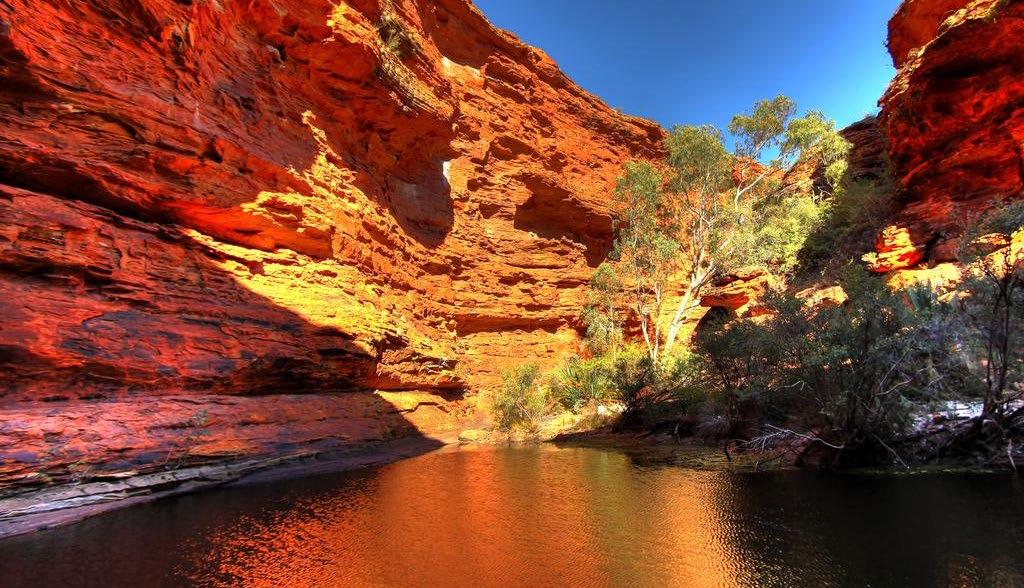
Katherine Outback Experience (Northern Territory)
From the apple isle to the ‘Top End’ and its magnificent richly hued outback landscapes…
This trek takes you through the heart of Australia’s outback, showcasing the vastness and unique but stark beauty of the region. You’ll ride through some of the Territory’s vast cattle stations where herds of cattle graze the spinifex grasslands.
The red earth plains here are dotted with huge termite mounds, and the precious waterholes stand out in the landscape with their river red gum fringes. In summer, they’re a welcome respite from the hot daytime temperatures.
Then, as you leave ‘civilisation’, such as it is out here in the middle of nowhere, the rugged, towering sandstone ranges the region is known for emerge from the horizon. This area is also home to some of Australia’s most iconic wildlife – kangaroos, emus, wallabies, and dingos. Keep an eye out for them as you pitch your tent ready for a night spent camping under the stars.
“
So, saddle up and get ready to explore Australia in much the same way the first settlers did several hundred years ago! ”
Ride difficulty:
Although the Katherine Outback Experience trek is about experiencing the vastness and unique beauty of the outback rather than negotiating challenging terrain, you still need to be an intermediate or experienced rider to take it on. You’ll spend long hours in the saddle, and should be comfortable walking, trotting, and cantering.
These 3 unique treks are just a sample of the incredible horseback riding adventures that Australia can offer. Each offers a unique opportunity to experience the country’s diverse landscapes and rich cultural heritage on horseback. So, saddle up and get ready to explore Australia in much the same way the first settlers did several hundred years ago!
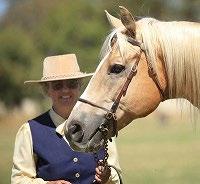
During a lifetime spent with horses, she has bred, competed, loved and written about them. She owns a collection of high percentage Tb crossbreds, most of which are palominos and registered Australian Stock Horses.
Summer 2024 | Riding Instructor 22
About the author:
Janet Forster hails from sunny Perth in Western Australia.

Sponsor Spotlight
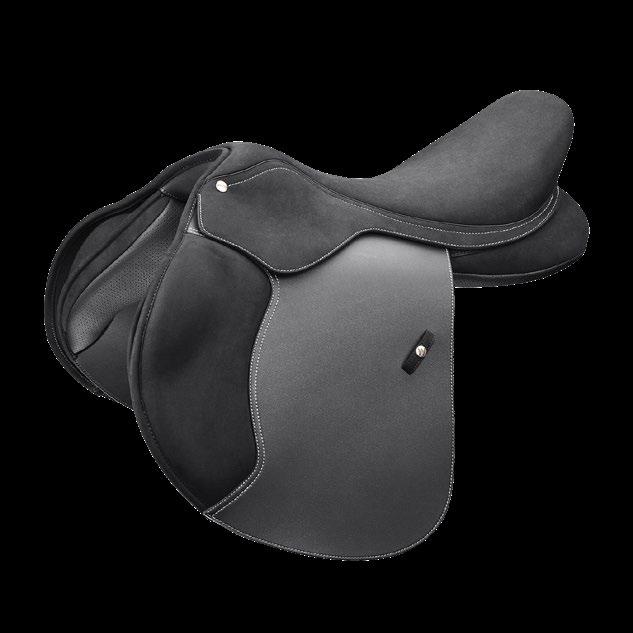
WINTEC PRO JUMP
Your students will feel in-control and confident to soar over any course of jumps as the super-soft deep seat provides the perfect level of grip to support their balance without restricting their movement. In this saddle, their leg will easily find a natural groove and contact and communication will become effortless. For their horse, super-soft panels mould in and around their working muscles, hugging their conformation on every stride and freeing them to fly. If you have a student looking for their next jump saddle, the Wintec Pro Jump could be the perfect choice! www.wintec-saddles.com









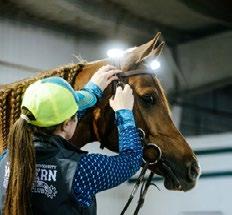

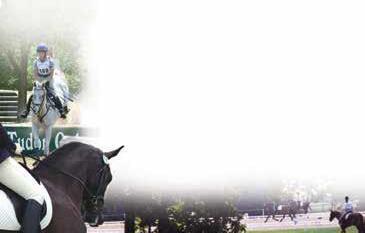
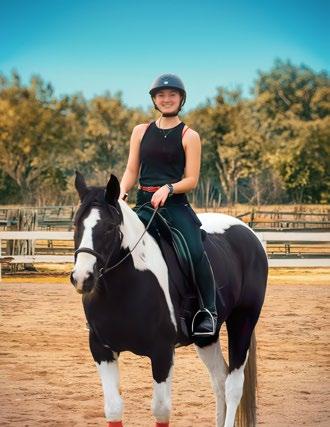
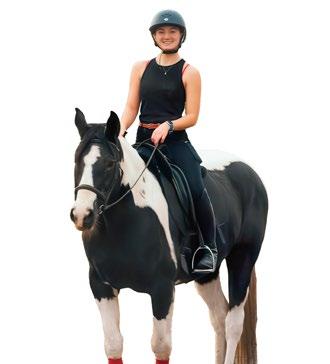
Summer 2024 | Riding Instructor 23 Earn your bachelor’s or online master’s from our nationally-acclaimed equestrian program williamwoods.edu/EQS Questions? 800.955.3159 | admissions@williamwoods.edu THE NAME TO KNOW IN EQUESTRIAN STUDIES SINCE 1924 Gain hands-on experience Show competitively
The first university in the U.S. to offer a four-year degree in equestrian science and the only one in the U.S. with all four riding seats!
Advance your teaching career with our online M.Ed. in Equestrian Education degree
Compete at national shows and world competitions
Gain hands-on experience at our on-campus equestrian center, including 3 riding arenas and over 100 horses Moving? Don’t miss a single issue… Phone or e-mail us with your new address. 603-605-5275 aria@riding-instructor.com www.riding-instructor.com Official Publication On The Trail Again Down Under by Janet Forster From Hoarse to Healthy: Voice Care for Instructors by Didi Arias
»
»
»
»
… in which Cameo Miller stirs her thoughts and ideas to see what rises to the top.
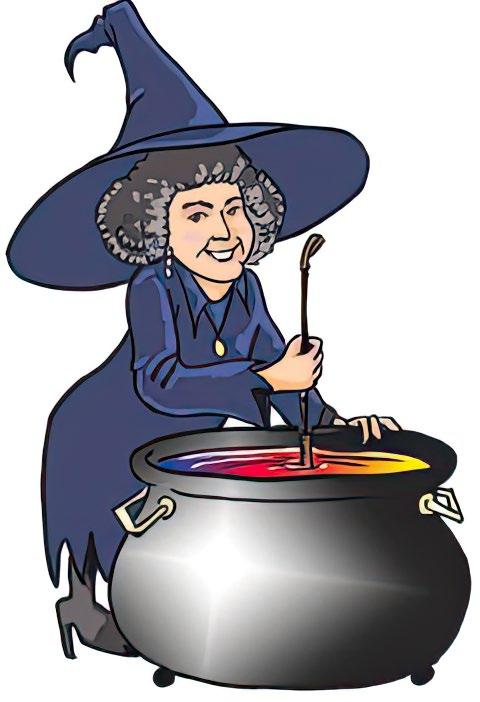
MAKE TIME FOR YOURSELF
By Cameo Miller
Illustration by Bethany Caskey
For every article I write I try to think: what do people need to hear or think about? What could I write that might help them to feel better, do better, be better—in who they are and what they do to help those in their sphere? This comes out in June which is the beginning of a season overflowing with an increased amount of work to do. This magazine is geared to helping riding instructors/trainers to improve and be their best, so it covers a wide range of topics to help you do that. But you are more than just our profession no matter how much you love it and devote your time and energy to it. There is your inner self that shines through
all you do, that infuses all, that makes you who you are—to your self, your horses, your staff, your family, and all others whom you come into contact with. That is the part of you I get to write to, and, hopefully, balance out with all the practical knowledge you get from the other articles.
We are very hard working people who tend to put everyone and everything before ourselves. There are a lot of people and animals depending on us to do exactly that. For the most part, we enjoy and thrive on this. Our connection to our students and animals gives back to us as much as we give to them. But there are times when it becomes too much and causes a serious drain on us. But we are hard working people, so we push through and keep going. There’s usually enough of a break somewhere that we can get the sleep, food, whatever, that we need to recharge. But sometimes we need to actually MAKE that happen. This is not selfish. You would counsel your students/ clients to do the same, and you would make it happen for your horses if they needed it.
So you need to have a plan for how you can do that yourself. One of the things you can do is to make a list of the things that recharge you. An actual written list that you can refer to. This is because when you are in the mists of a crisis of depletion, you will not be able to think clearly enough (or feel you have the time or energy) to do it then. If you already have a list, you can just go down it to find whatever item will work for your current situation. Knowing that this is how it’s going to work, you can put as many different things on it as possible so that one or more of them will resonate with you when you need it. Think of the things that most drained you in the past. What things caused you the most stress last season? Do you need ways to get a nap, aids to help you fall asleep at night when your mind is whirling (try to make this things other than drugs—although valerian works well), quick meals in a freezer or things you can eat on the go, friends you can call to help with
“
One of the things you can do is to make a list of the things that recharge you. ”
some task? How about a quiet ride on your favorite horse, not to train, just for fun. Do you have a friend that you can go to to rant and rave knowing that they will just nod and commiserate without trying to do anything more? Add as many and as varied things to your list as possible so that just the right solution will be available to you when it is needed.
Another thing to think about and define is what constitutes the need to actually put the brakes on and MAKE time to recharge. You have this worked out for your students and your horses. You know the signs that mean you need to more actively interfere and make them take a step back. What are the signs and symptoms in yourself? You need to write these down too. We have a tendency to ignore and overlook them, or make light of them, for ourselves. So these need to be there in black and white (maybe in red?) so they glare at us when we need to see them. You know what happens if your students don’t listen or you don’t give a horse that time off when needed. You are not superhuman, the same is going to happen to you. You don’t have time for that right now? If you push too hard for too long, your thinking and ability to function is impaired, your productivity actually decreases, and you are more apt to make
Summer 2024 | Riding Instructor 24
Cameo’s cauldron
“
Summer: the time when we swat an itch rather than scratching it. ”
mistakes—some that could be serious. You know this. So know the point at which you need to MAKE time for yourself before bad things happen.
All this thinking and making a list may seem like just one more thing you don’t have time for right now, but it may be exactly the thing you need in the future to get through as especially difficult time when you can’t see the light at the end of the tunnel. You remember having times like that don’t you? When you wished you had some help, any help, to get there. What and who deserves your time? You put in the extra effort to make sure your students and horses have the best chance of succeeding during their times of stress. Don’t you deserve the same consideration? Make the list now so the ideal solution will be right in front of you to light the way so you can get out of the dark and back to being your best self again, back to doing what you enjoy and love.
Summer: the time when we swat an itch rather than scratching it.
About the Author:
Cameo Miller is a Masters-level clinical psychologist and a Level IV ARIA Certified Instructor based in Michigan. She is a member of the ARIA Evaluation Panel and an ARIA National Test Center Administrator.

Your E-Mail Address is important - for us and for you!
ARIA communicates primarily by e-mail with its members. Please make sure we have a working e-mail address for you.
If you’re not sure, write to us at aria@riding-instructor.com and let us know your current e-mail address.
Thanks!
Summer 2024 | Riding Instructor 25
4 2 8 6 5 9 3 7 1 7 5 3 2 8 1 4 6 9 9 1 6 3 4 7 5 2 8 5 9 4 7 1 3 2 8 6 8 7 1 4 2 6 9 3 5 6 3 2 8 9 5 7 1 4 3 6 9 5 7 8 1 4 2 1 4 7 9 6 2 8 5 3 2 8 5 1 3 4 6 9 7
